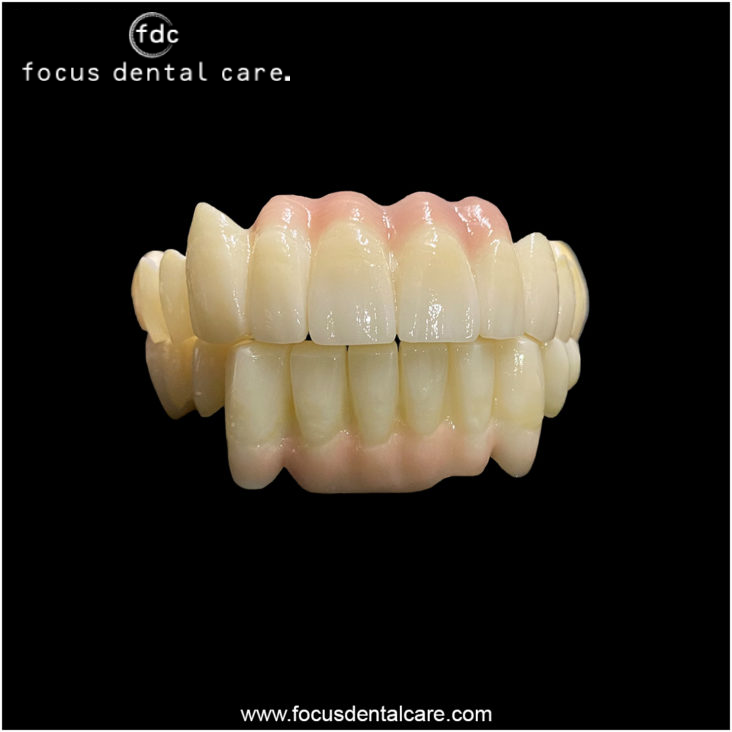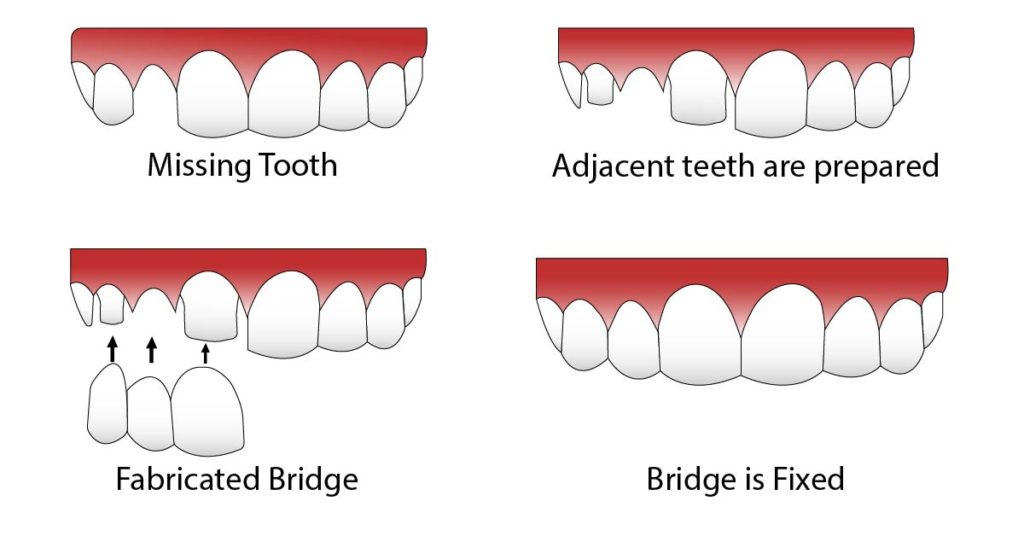What are Dental Bridges?
- Dental bridges bridge the gap created by one or more missing teeth.
A typical dental bridge has:
- Abutment teeth/Supporting teeth: A dental bridge has two crowns on the teeth, on either side of the gap (tooth is missing). These anchoring teeth, or supporting teeth, can be your natural teeth or dental implants.
- Pontic: This is a false tooth that fills in the gap and attaches to the crowns.
Types of Dental Bridge
At Focus Dental Care, we provide various types of Dental Bridges that are:
- CEREC CAD-CAM bridges, which are fabricated and fixed in a single sitting.
- Metal Ceramic Dental bridges.
- DMLS (DIRECT METAL LASER SINTERING) bridges.
- Zirconia bridges
PROCEDURE FOR GETTING A DENTAL BRIDGE
For Cerec Cad-Cam Bridge – (Single Visit Dentistry)
- The first step is preparing the adjacent teeth for seating the bridge, and the selection of shade is made.
- A 3D scan of your mouth is taken.
- Milling of your Dental bridge on-site.
- Your dentist fits the Dental bridge, checks it, and makes any minor adjustments if required.
- Finally, the doctor will cement/fix it permanently in your mouth, where it will remain for many years and looks exactly like any of your natural teeth.
For Other Dental Bridges
- In the first visit, your dentist prepares the abutment teeth/ adjacent teeth to be appropriate for the bridge to be placed.
- Impressions of the shaped teeth are then made and sent to a dental laboratory to construct the bridge.
- In your second visit, the dentist will check the fit of the dental bridge and is sent back to the laboratory for making necessary corrections.
- In the third and the final visit, the dentist will cement/fix the dental bridge permanently.
What are the benefits of a Dental Bridge?
- Dental bridges restore a natural look to your mouth/smile.
- Dental bridges restore the ability to speak normally, as missing teeth can impede proper pronunciation.
- Dental bridges maintain standard facial structure by preventing bone loss in the region where teeth are missing.
- Dental bridges restore the ability to chew food efficiently.
- Migration of teeth into adjacent spaces where teeth are missing leads to problems related to your bite. Dental bridges prevent adjacent teeth from moving into space where the tooth/teeth are missing.



